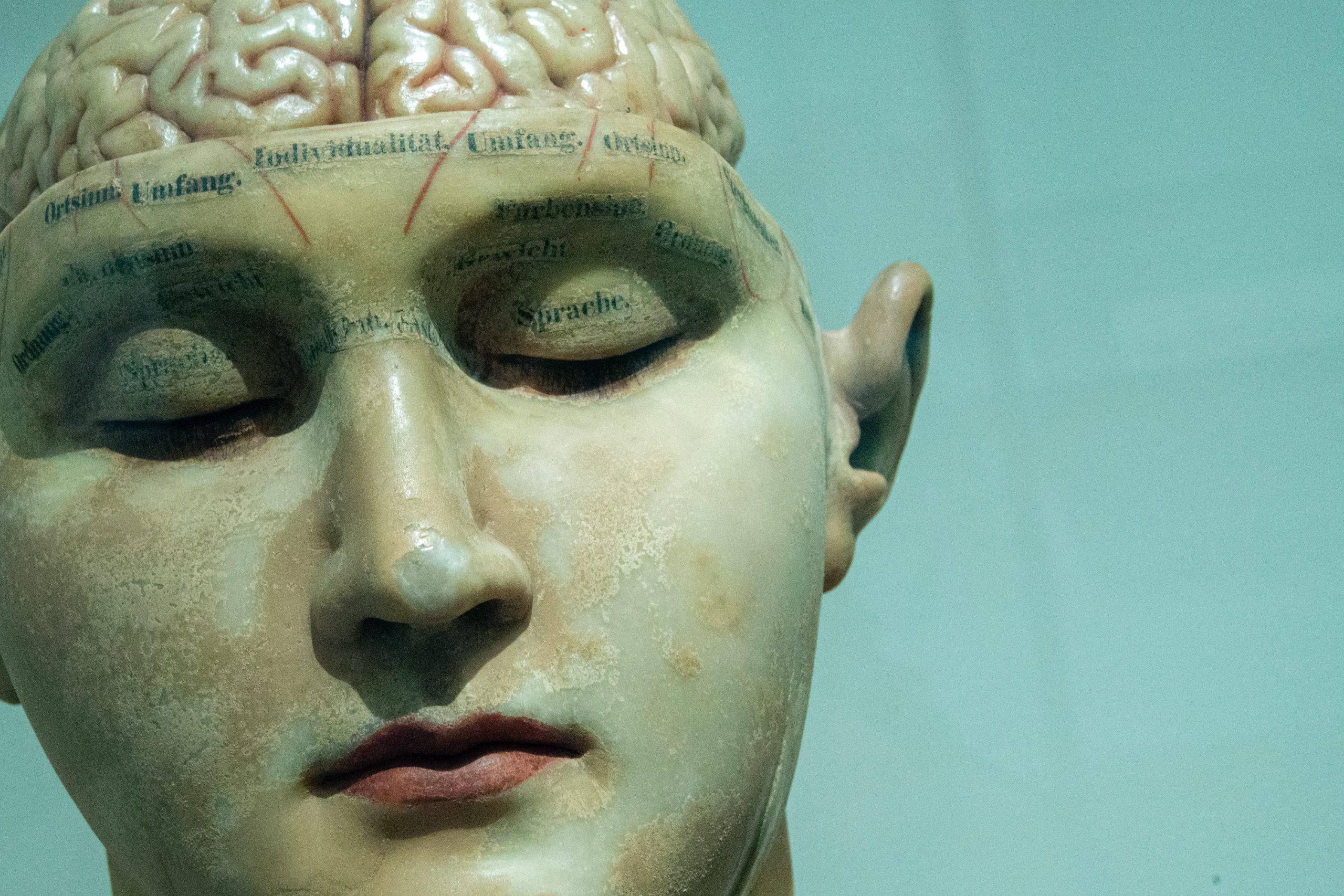In the fall of 1973, just as the country finished watching the Watergate hearings, my mother enrolled in classes to become a psychologist. Watergate wasn’t why she decided to go to graduate school—my mother has always been interested in anxiety—but the national atmosphere it created certainly helped. At that time we were living in Washington, DC, and she couldn’t run to the deli for a jar of pickles without getting caught in conversations about cover-ups and wiretapping and CIA conspiracies.
As part of her studies, my mother sometimes used my younger sisters and me as practice subjects. She gave us batteries of IQ tests and asked us to interpret inkblots. We answered questions on the Myers Briggs Type Indicator to determine our personality types and whether we were introverts or extroverts. For our participation, we were rewarded with peanut M&Ms and, most meaningfully, her attention, which was hard to come by in a household with three children, three dogs, and my unhappy father, who was even more demanding than the rest of us.
That winter, a slim copy of the second edition of the Diagnostic and Statistical Manual of Mental Disorders (DSM) appeared on my mother’s desk in the little room by the front door she now used as a study. Leafing through it one afternoon, I found a list of ten personality disorders, which were “characterized by deeply ingrained maladaptive patterns of behavior,” and “often recognizable by the time of adolescence.” By then I was thirteen and moody: easily enraged by my sisters, easily mortified at school, tormented by guilt over small offenses and blunders, yet convinced I was destined for greatness (especially when alone in my room). I veered daily between bouts of despair and exultation that would exhaust me now but at the time seemed energizing. I also adored my mother and wanted her to myself. Consulting the DSM, I diagnosed myself with all ten personality disorders the way I once misted myself with her entire collection of perfumes.
Over the next several weeks, I presented my findings to my mother while washing dishes after dinner, one of the few dependable ways to catch her alone. “Possibly you have a tendency to be passive-aggressive,” she might allow, handing me a pot to dry. “We all have dysfunctional tendencies.” I would then offer evidence for why I really was obsessive-compulsive/paranoid/anti-social. If you wanted to edge out your barking, squabbling, brooding competition, the surest way to engage my mother was to be worried about something, especially something complicated. Yet unlike my problems at school or with my sisters, personality disorders failed to capture her attention. The more I insisted on my deeply ingrained maladaptive behaviors, the more blandly my mother reacted. These dishwashing sessions generally ended with a recommendation that I get outside more or invite a friend over, and the dogs, by the way, could use a walk.
It was a deflating response at the time, but I’ve come to believe my mother’s apparent disinterest did signal concern, quite a bit of it. Had she suggested dysfunction by subjecting her children to so much psychological testing? Created it by going to graduate school instead of staying home? (My father’s view.) I’m sure she also wanted to discourage me from embracing any of the conditions I was flirting with. A word is not just a word when it’s a diagnosis.
Whatever the case, confronted with a kitchen sink of disorders claimed by an adolescent reeking of Love’s Baby Soft with a spritz of Styx, my mother was clearly aware that explanations of human behavior are never trustworthy. Especially explanations of one’s own behavior, which are so often shaped as much by convenience, self-importance, and disingenuousness as by an effort to be understood. When it comes to people, my mother must have known, explanations hide as much as they reveal.
My mother went on to become an excellent psychologist, so this recognition ultimately served her well. It’s a recognition that serves novelists well, too. Characters always have problems at the beginning of a story, for example, but rarely do they have a firm understanding of those problems, or themselves, for the simple reason that misconceptions, ambiguities, and, above all, secrets, create drama. “What did the president know, and when did he know it?” Senator Howard Baker’s famous question during the Watergate hearings captured the power of uncertainty. If a character doesn’t know something or is hiding something, readers want that something discovered and explained. We want the facts. We need them in order to feel that the story has been told.
If a character doesn’t know something or is hiding something, readers want that something discovered and explained.
But has it? Have the effects of those misunderstandings and ambiguities—those secrets—been resolved? Or have new doubts moved in? Perhaps it’s our current hurricane of misinformation (which make the lies and dirty tricks of the Watergate scandal look like drizzle), but when it comes to thinking about human behavior these days, I find myself less interested in “the facts” than in how people become so convinced they know them.
While visiting my mother a few months ago, I found my father’s love letters, written to her during their courtship while he was getting divorced from his first wife. He believed he would love my mother forever—something he repeats passionately in those letters—and yet after twenty years of marriage, he divorced her, too. Was it because her attention was even harder to hold once she began seeing patients? Because he resented her success? Because he’d lost his own mother as a child and felt he was losing another? (The view of his third wife, a Jungian analyst.) What did he come to “know,” exactly, that altered how he felt—and when did he know it?
At the time, I was too young to ask my father questions like these, but even if I’d asked him later, I wonder how reliable his answers would have been. It’s hard to get to the truth about yourself, whether you’re a public figure, a teenager, or an elderly man with three failed marriages and many regrets. And if it’s that difficult to comprehend yourself, how on earth can you expect to fathom anyone else? This is not to critique psychotherapy, but rather to say that any analysis of human behavior is bound to leave so much out.
“The personal life of every individual is based on secrecy,” Chekhov writes in “The Lady with the Dog,” adding, “and perhaps it is partly for that reason that civilized man is so nervously anxious that personal privacy be respected.” By secrecy, I think Chekhov is referring not to whatever sins we might be hiding, but to the contradictions and incongruities that can’t be explained about us, that we can’t explain, even to ourselves. A secret inner life is our greatest privilege, but also often our greatest fear. (The current edition of the DSM lists almost three hundred mental disorders and runs over a thousand pages.)
Where you can go inside other people’s heads is, of course, the project of the novel, wherein secrets exist to be uncovered. As the critic Janet Malcom notes in Reading Chekhov, “If privacy is life’s most precious possession, it is fiction’s least considered one,” and goes on to refer, somewhat ruefully, to “the glaring exposure to which the souls of fictional characters are held up.” In other words, characters in a novel transform between the first and the last chapters, sometimes with enormous complexity, but everything there is to be known about them is on the page. If you miss something, you can reread a few chapters to figure out what happened. Characters may behave in puzzling ways, may be paranoid, anti-social, obsessed with their mothers or their political enemies, or pathological liars who couldn’t accept a fact if you gave it to them in a pickle jar—but eventually you find out why. More or less. As E. M. Forster puts it, “people in a novel can be understood completely, if the novelist wishes.”
And yet, explaining their behavior is not what makes characters relatable.
And yet, explaining their behavior is not what makes characters relatable. In fact, it’s when characters don’t understand themselves very well that readers worry most about them, identify with their difficulties and confusion, and keep reading—which is vital, because characters, unlike people, don’t exist when no one is paying attention to them. What makes the affair between Gurov and Anna in “The Lady with the Dog” so surprising and convincing, for instance, is that they can’t figure out why they have fallen in love with each other, or what to do about it. They truly don’t know their own minds and, as the story suggests by its famously irresolute ending, probably never will. Chekhov, of course, was a master at revealing how emotions we believe should be definite, like love and grief, are full of inconsistencies. He also understood that readers are more deeply intrigued by hesitating characters (see Hamlet) than by decisive ones (see Ivanhoe).
On the other hand, there are those characters who think they understand themselves perfectly and must discover, usually with reluctance, that they don’t—a problem I recently gave to one of my own characters, who is, incidentally, a therapist. In such stories, the reader is usually better informed than the characters, who believe their problems are simply resolvable obstacles and must be forced to see the real trouble they’re in. Frequently this trouble is of their own making, a result of misguided notions and projections. Jane Austen’s Emma thinks she’s shrewd about human nature, yet her assumptions about other people, and her motivations for interfering in their romantic lives, are completely wrong-headed. The reader’s own clear-sightedness becomes part of the drama: we see how Emma is misjudging herself and everyone else, so why can’t she? Anxiously, we hope she wises up before she ruins several futures, including her own. Once again, our engagement with the story is intensified by the character’s lack of self-knowledge, which reminds us, ideally, of our own blind spots. The longer characters can remain somewhat opaque to themselves, or at least have a few questions they keep asking, the more absorbing their predicaments, and the more their worlds feel like ours.
In any case, fictional problems must reach a last page. The story has to end. The reader closes the book, and maybe, that same evening, picks up another and gets caught up in a new set of anxieties.
This past summer and fall, I spent hours following the January 6th Select Committee Hearings, which reminded me of watching the Watergate hearings with my parents, fifty years ago, down to the question of what the president knew and when he knew it. My mother’s current view of national politics is that it’s “one big mess,” which was also her opinion during the Watergate era. My mother is now in her late 80s; she still sometimes says she’s bewildered by what happened in her marriage to my father, who is no longer alive. But she doesn’t like dwelling on past unhappiness any more than she likes talking about politics or her health. Anxiety, however, continues to interest her. During a recent phone call, I asked what she was reading. A novel, she told me. “Can’t remember the title,” she said cheerfully, “but the people in it certainly have a lot of problems.”
It’s a strange desire, in this world of trouble, to go seeking other people’s problems, and yet what a relief, for both readers and novelists, to feel that every so often a problem can be completely understood.
























































